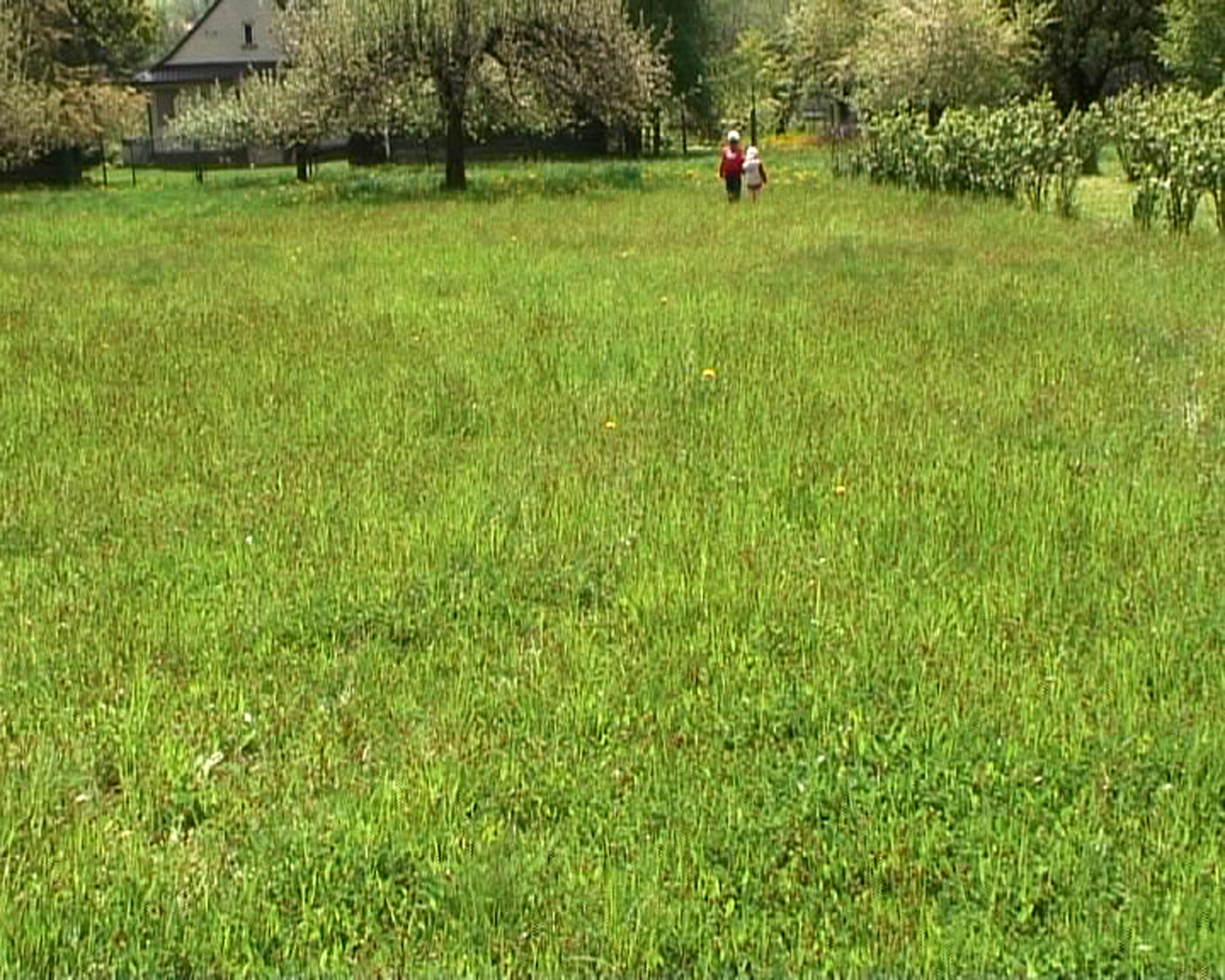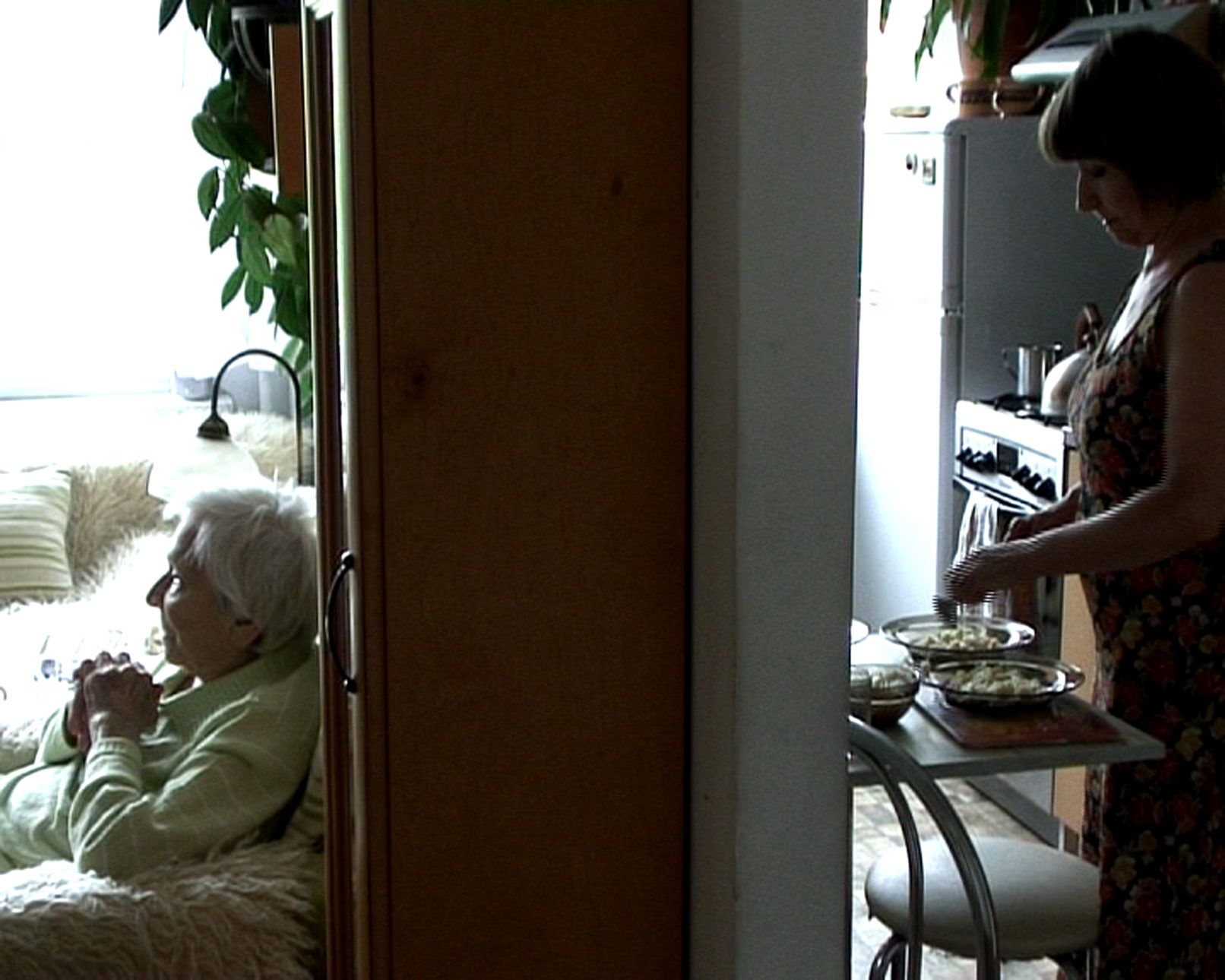Daughters
video 40min, April 2008
performed by artist’s family
music: Michał Jacaszek
text: Ewa Małgorzata Tatar ‚Zorka Wollny – being an artist in all the unnecessary’ from the exhibition cataloque, 2008
Daughters (2008) were inspired by a poem by Bozena Keff A Piece on the mother and fatherland (2008), and fairy tale radio plays, performed by the PP Polish Recordings. The artist filmed a family saga novel.
The saga of women. In the five dream-like episodes corresponding with one another, the artist presents the members of her own family: mothers, daughters, sisters talking about each other, about their experiences of being a woman and a legacy passed on from one generation to another. Sometimes the filmed characters stays silent, but speak with their bodies, personalities, environment and relationships. Herstories complement each other, they mingle and contradict each other. However, the aim of the artist is not to build a coherent narrative, but rather to show cracks in it, and to exract the meaning from them. Through the story, thrform of the movie and the created iconography, Zorka shows how much the fortunes of real women are ruled by the cliches embedded in the Polish Catholic reality, and to what extent a mother, a strong central figure of the patriarchal discourse, determines the fate of future generations. This work is a sheer gesture of psychoanalysis, dressed in the beautiful costume of sleepy afternoons. The seductive costume of the aesthetic games of light, framing, set design, is to soothethe seemingly obscure,unreadable, yet significant coincidence of the legacy of women’s trauma.
Córki
wideo 40 min, kwiecień 2008
wystapiła rodzina artystki
muzyka: Michał Jacaszek
tekst: Ewa Małgorzata Tatar, „Zorka Wollny – bycie artystką we wszystkim co niepotrzebne”, katalog wystawy, 2008
„Córki (2008) zostały zainspirowane poematem Bożeny Keff Utwór o matce i ojczyźnie (2008) oraz baśniami-słuchowiskami w wykonaniu P.P. Polskie Nagrania. Artystka nakręciła rodzinną sagę. W pięciu onirycznych, korespondujących ze sobą epizodach Zorka ukazała członkinie swojej rodziny, matki, córki, siostry mówiące o sobie nawzajem, o doświadczeniu bycia kobietą i o dziedzictwie przekazywanym z pokolenia na pokolenie. Albo nie mówiące wcale, za to mówione swoim ciałem, wizerunkiem, otoczeniem i relacjami z nim. Herstorie dopełniają się nawzajem, przeplatają, przeczą sobie.
Zorka poprzez fabułę, środki filmowe i tworzoną za ich pomocą ikonografię ukazuje jak bardzo losami realnych kobiet rządzą osadzone w polskiej katolickiej rzeczywistości klisze, jak mocno silna matka jako centralna postać patriarchalnego dyskursu determinuje losy kolejnych pokoleń. Praca ta jest swoistym gestem psychoanalitycznym ubranym w piękny kostium sennego popołudnia. Uwodzący kostium estetycznych gier światłem, kadrowaniem, scenografią, który ma łagodzić, maskować na pozór przecież nieczytelny, w rzeczywistości gęsty i znaczący, splot dziedziczonych kobiecych traum.”


